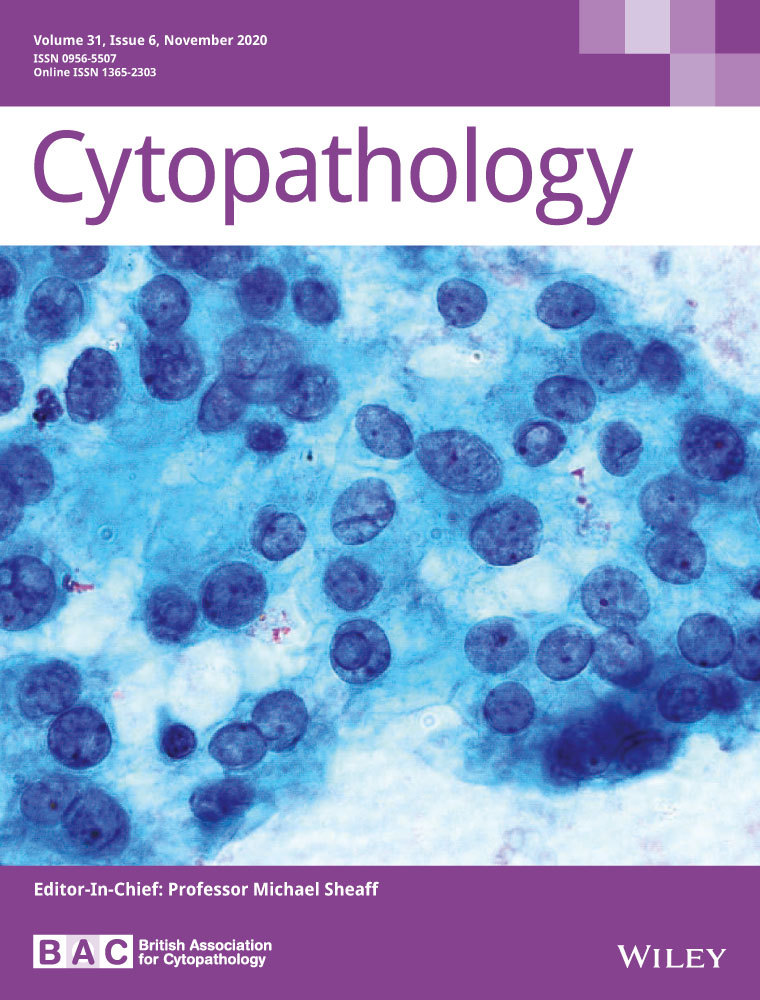Rates of Thy 1-non-diagnostic thyroid fine needle aspiration using the UK Royal College of Pathologists Thy Terminology. A systematic review of the literature comparing patients who undergo rapid on-site evaluation and those who do not
Funding information
Dr Poller declares no competing interest. Dr Poller is a member of the UK Royal College of Pathologists Guideline Development Committee for Thyroid FNAC but has received no financial or other remuneration in respect of this role.
Abstract
Introduction
The UK Royal College of Pathologists (RCPath) Thy terminology is an internationally recognised system for reporting thyroid fine needle aspiration. The terminology has been used throughout the UK and Ireland, in some parts of Italy and Switzerland, and elsewhere in the world. There is no systematic review of the literature specifically addressing the use of the non-diagnostic for cytological diagnosis-Thy1/Thy 1c category in the UK RCPath terminology.
Methods
A comprehensive literature search of online databases was conducted in October 2019 specifically examining overall reported rates of Thy1 and Thy1c in aspirates classified according to the UK Thy terminology.
Results
Twenty-five articles were identified showing a Thy1 rate of 13.4% (2540/18 920). The studies were then stratified according to whether or not the patients underwent rapid on-site evaluation (ROSE): 6.0% (353/5841; range 3.0%-10.9%) of ROSE aspirates were Thy1 whereas 18.5% (2072/11 204; range 7.9%-43.3%) of non-ROSE patients were Thy1; (P < .05). Three studies from 2016 reported Thy1c rates of 5.4%, 6.5% and 10.6%, respectively, implying Thy1 rates excluding Thy1c aspirates of 20.9%, 8.7% and 12.7%, respectively.
Conclusion
This systematic review of the literature shows relatively high rates of aspirates non-diagnostic for cytological diagnosis-Thy1 in the peer-reviewed published literature using the UK terminology. Utilisation of ROSE appears to produce lower rates of Thy1 aspirates and ROSE should be considered if rates of non-diagnostic for cytological diagnosis-Thy1/Thy 1c are high.
Abstract
This systematic analysis of the peer-reviewed published literature utilising the UK Royal College of Pathologists’ Thy thyroid FNA terminology addresses the question of Thy 1 aspirates. It shows that centres which use rapid on-site evaluation (ROSE) appear to have statistically lower rates of Thy1 aspirates than those that do not. It makes the case for implementation of ROSE for ultrasound-guided thyroid FNA's if Thy1 rates are high although acknowledging that ROSE may not be essential in all circumstances. It also makes the case for a maximum acceptable target rate for Thy 1 FNA's excluding Thy 1c cystic lesions of 15%.
CONFLICT OF INTERESTS
The authors have no conflict of interest to declare.
Open Research
DATA AVAILABILITY STATEMENT
Research data are not shared. Note that this article is a systematic review article therefore all the relevant data are already available in the public domain or in the article itself.




